Test: Optical performance of Nikonos 15mm, flat and dome ports
Optical performance of flat port, dome port and Nikonos 15mm underwater
By Pawel Achtel
The purpose of the test was to establish the differences in optical performance between flat port and Nikon Nikonos 15mm lens underwater.
The tests were performed using RED Epic camera in 5k mode (5120x2560). SFR (Spatial Frequency Response) chart target was placed underwater.
The SFR process is fully automated using Imatest and allows measurements of MTF and chromatic aberrations in selected points of the image frame, called Regions of Interest (ROI).
Several takes were captured with focus set each time using 1:1 magnification at widest aperture. The sharpest images were chosen for comparison.
Four configurations were tested:
- Flat Port using Arri Zeiss Master Prime 14mm lens, approximate field of view: ~79°
- Dome Port using Arri Zeiss 14mm MK II lens, approximate field of view: ~90°
- Dome Port using Arri Master Prime 14mm lens, approximate field of view: ~90°
- Nikon Nikonos UW-Nikkor 15mm f/2.8, underwater field of view (diagonal): ~74°
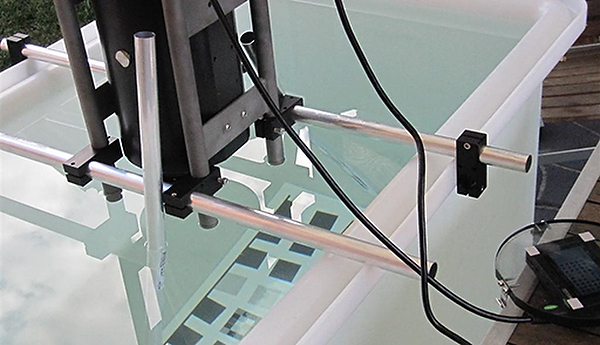
The setup was mounted on rigid frame assuring repeatable results and perfect alignment of the image and target planes.
1. FLAT PORT
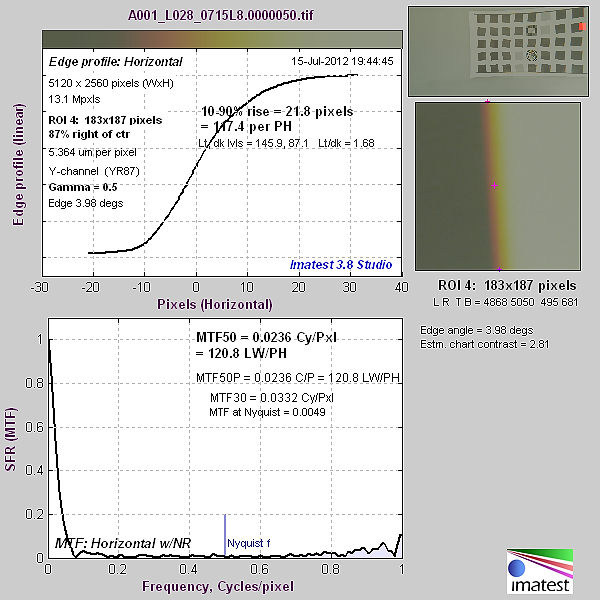
Arri Master Prime 14mm - Flat Port
The ROI was selected on the edge of the frame (red rectangle top right).
As we can see the image sharpness is strongly limited by the optics and reaches 0% at less than 15% of the sensor resolving limit (Nyquist).The resolution at which the contrast falls to 50% at the edge of the frame is only 120 line widths (60 line pairs) per picture height, or 0.0236 cycle (line pair) per pixel, where 0.5 cycle per pixel being the sensor limit. The “sharp” edge of black to white transition takes 21.8 pixels (with the theoretical best of 2.0 pixels).
This is less than standard definition quality. The fact that the contrast reaches 0% means that no amount of sharpening can recover the detail lost.
Considering that the taking lens is capable to out resolve the sensor, it is clear that the flat port introduces very significant contrast loss caused by astigmatism and chromatic aberrations. These aberrations become even higher as the viewing angle increases.
In addition to loss of sharpness and aberrations, flat port produces significant geometric radial distortions. These distortions cause the edges of the image to be stretched. These are also called pincushion distortions.
All radial distortions need to be corrected if filming in 3D or converting from 2D to 3D. The reason these distortions need to be corrected is that they would cause vertical disparities in the stereoscopic images, which would cause eye strain and discomfort.
While these distortions can be corrected, the correction involves stretching the middle of the frame. This would deteriorate the sharpness in the centre of the frame and make the entire image appear fuzzy.
The original TIFF file that was analyzed can be downloaded here. Caution-very large file!
2. DOME PORTS
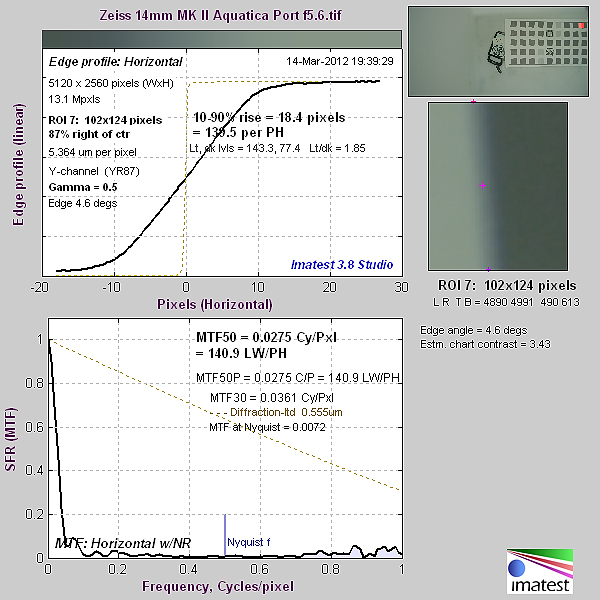
ZEISS MK II 14mm f5.6 Aquatica Dome Port
The ROI was selected on the edge of the frame (red rectangle top right).
As we can see the image sharpness is again limited by the optics and reaches 0% at less than 20% of the sensor resolving limit (Nyquist). The resolution at which the contrast falls to 50% at the edge of the frame is only 140 line widths (70 line pairs) per picture height, or 0.0236 cycle (line pair) per pixel. The “sharp” edge from dark to bright region takes 18.4 pixels (with the theoretical best of 2.0 pixels).
This is less than standard definition quality. The fact that the contrast reaches 0% means that no amount of sharpening can recover the detail lost.
The dome port introduces very significant contrast loss caused by astigmatism and image plane curvature introduced by the dome. These aberrations become even higher as the aperture increases. Also, smaller dome ports create higher image plane curvature and more loss of the resolution.
The original TIFF file that was analyzed can be downloaded here. Caution-very large file!
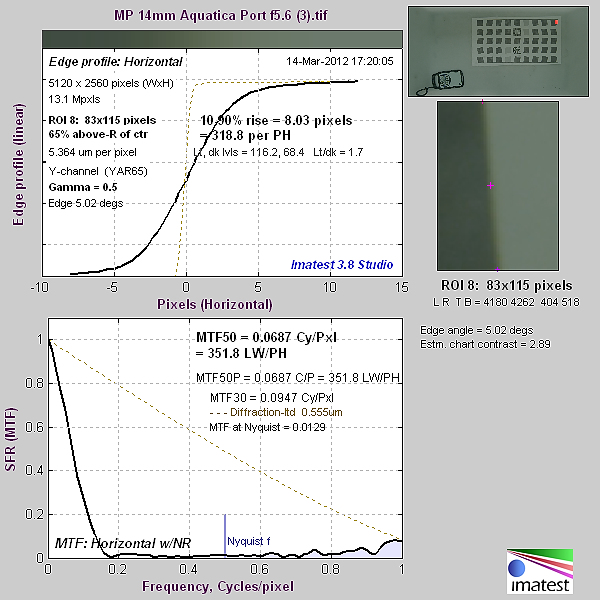
Master Prime 14mm at f5.6 Aquatica Dome Port
The ROI was selected on the edge of the frame (red rectangle top right), however, not in the very corner.
As we can see the image sharpness is again limited by the optics and reaches 0% at less than 40% of the sensor resolving limit (Nyquist). The resolution at which the contrast falls to 50% at the edge of the frame is only 351 line widths (175 line pairs) per picture height, or 0.069 cycle (line pair) per pixel. The “sharp” edge from dark to bright region takes 8 pixels (with the theoretical best of 2.0 pixels).
This is less than high definition quality. The fact that the contrast reaches 0% means that no amount of sharpening can recover the detail lost.
The original TIFF file that was analyzed can be downloaded here. Caution-very large file!
To illustrate the dramatic loss of sharpness towards the edges at wider apertures, here is the same test performed at f/2.8.
The frame captured with Arri Master Prime 14mm lens set at f/2.8 placed behind a 9” dome can be downloaded here. Caution-very large file!
This is as good performance as one can expect from a dome system at this aperture. The loss of resolution is caused by astigmatism and image plane curvature.
3. Nikon Nikonos UW-Nikkor 15mm f/2.8
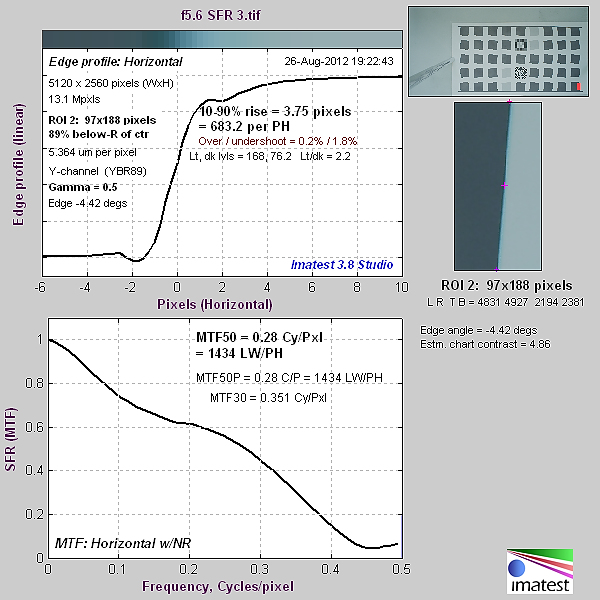
Nikon Nikonos UW-Nikkor 15mm f/2.8
The ROI was selected on the edge of the frame (red rectangle bottom right).
As we can see MTF curve extends right up to the sensor resolving limit (Nyquist). The measured resolution at 50% contrast loss (MTF 50) measured on the edge of the frame is impressive 1434 line widths per picture height, or 0.28 cycle (line pair) per pixel. The edge transition from dark to bright region takes just 3.75 pixels, making the edges appear sharp.
It is clear that the lens out-resolves the sensor. In fact, we established that it does so in every point of the frame from corner to corner.
The image is rectilinear and does not suffer from geometric distortion. For this reason this lens will produce “immersive” motion pictures. In 3D, this lens will produce little to no vertical disparities resulting in stereoscopic pair of images that are easy to fuse without the eye strain.
The original TIFF file that was analyzed can be downloaded here. Caution-very large file!
Conclusions:
Sharpness in the centre of the frame.
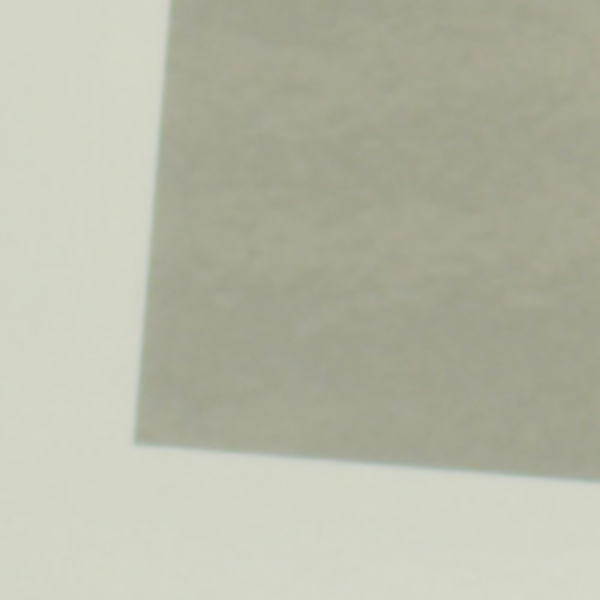
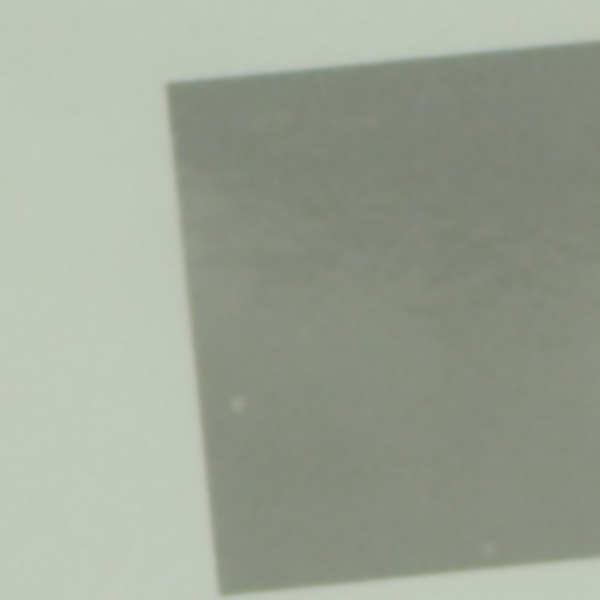
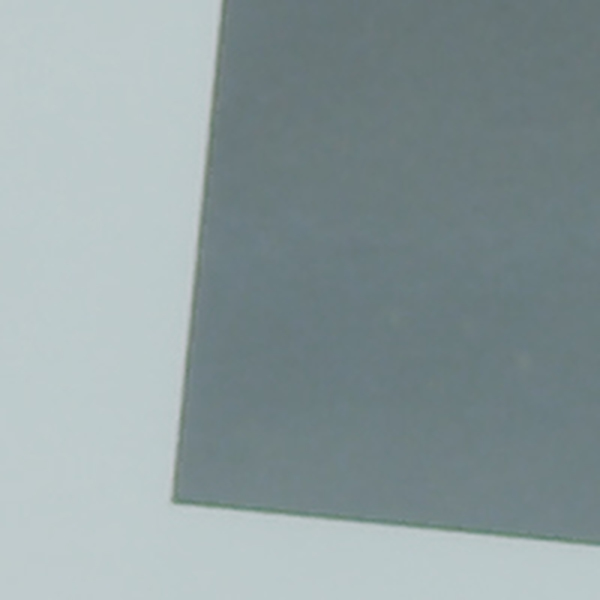
Sharpness at the about half way between centre and edge of the frame.
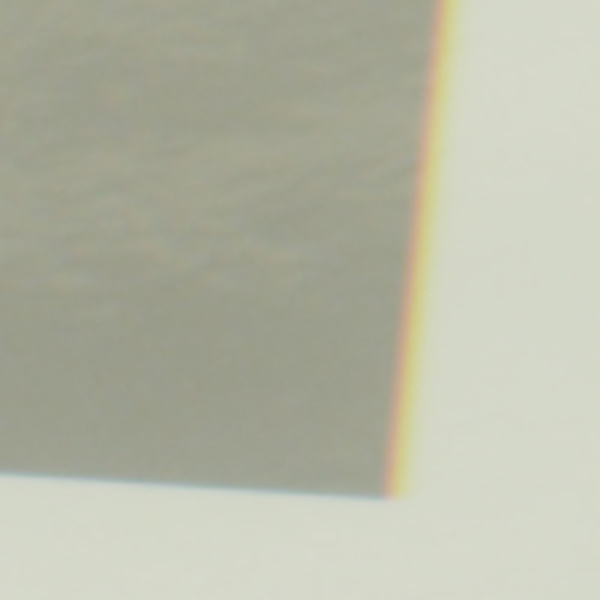
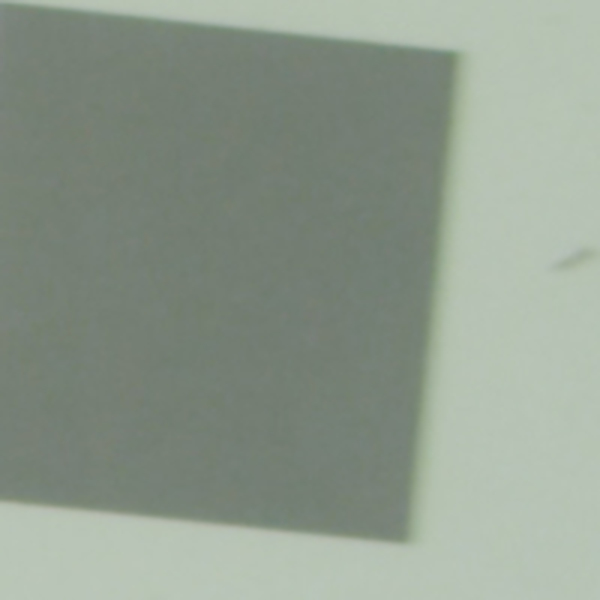
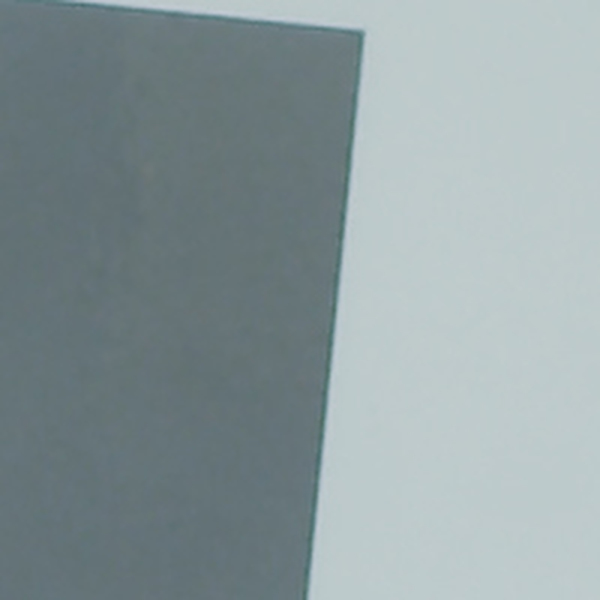
Sharpness in the corner of the frame.
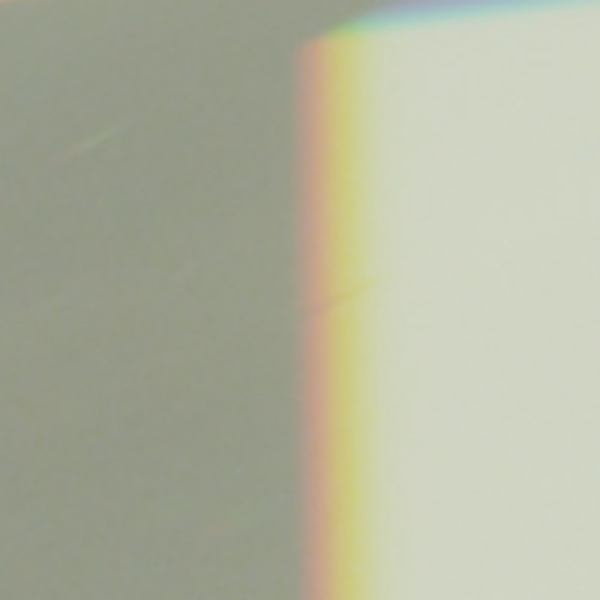
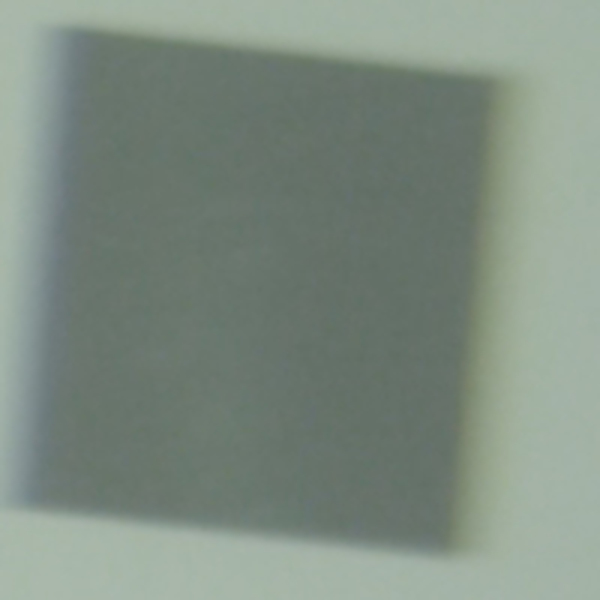
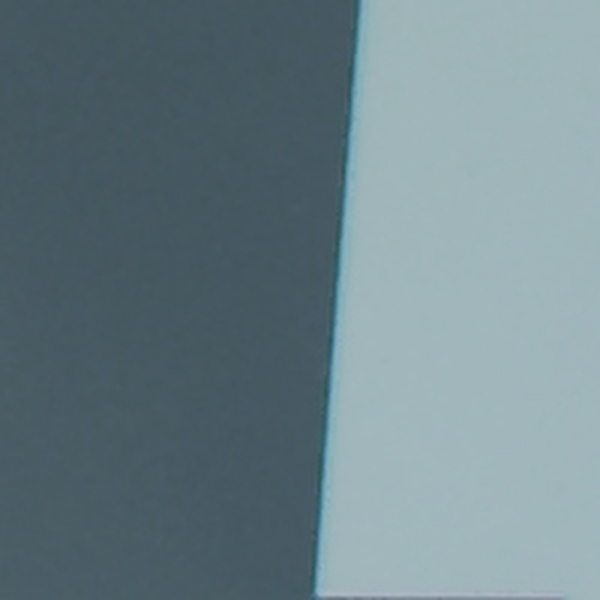
Nikon Nikonos 15mm lens is an ultra-wide submersible lens. It cannot be used on land but underwater it has been long considered as the best underwater optics even before high resolution digital cameras become available. It featured modern retrofocal design, fast f/2.8 aperture and close focusing ability.
But the best feature about this lens was its rectilinear (non-distorting) design and incredible sharpness from corner to corner - something that even the best land lenses can not achieve when placed behind flat or dome ports.
It is because of these rectilinear properties that make this lens so highly desirable for cinema work. Unlike fisheye lenses and land lenses placed behind glass ports, the Nikonos 15mm produces perfectly flat images underwater. While this may not be such a big deal in still picture photography, motion pictures require undistorted images to create immersive feel. And, undistorted images are also a must in 3D stereoscopic cinematography. Any geometric lens distortion, whether created by a fisheye lens, flat or dome port, cause vertical disparities. Vertical disparities are when equivalent parts of the left image are shifted vertically in relation to the right image of the stereo pair. These are aberrations that our brains can not tolerate and can cause severe eye strain and even nausea by viewers watching stereoscopic 3D content that was filmed using lenses or ports with geometric distortions.
Our MTF (Modulation Transfer Function) measurements show that the Nikon Nikonos 15mm lens is a very sharp lens - so sharp it can out-resolve even the highest resolution digital sensors in use today. In fact, it is capable to resolve more than 8K ñ something very few land lenses can achieve on land ñ a truly remarkable optical performance. In comparison, a typical 9î optical glass dome port when coupled with an equivalent wide angle land lens can not resolve more than about 2K around the edges regardless of how good the taking lens is. In practice, much less than 2K. This is because of the so-called image plane curvature ñ an optical phenomenon causing flat image projected sharp on curved surface and therefore out of focus around the edges of a flat sensor.
A flat port performs even worse, causing geometric distortions, astigmatism and severe chromatic aberrations typically resulting in less than 1K resolution in an equivalent setup.
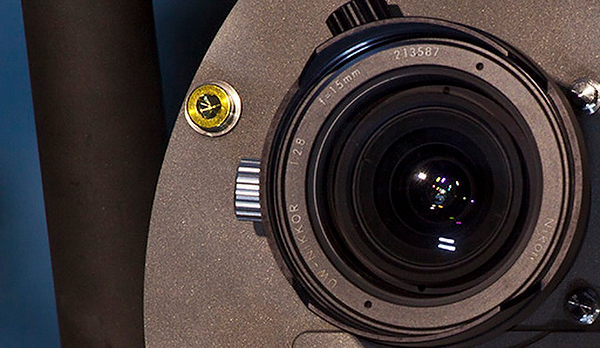
The Nikon Nikonos 15mm lens is the only ultra-wide angle underwater optics that can produce undistorted ultra-high definition images.
No other submersible lenses or any other terrestrial lens placed behind an underwater port, can offer such performance. Even the newer RS Nikonos range of lenses do not offer ultra-wide angle rectilinear option and are limited to macro, medium angle and fisheye selection only, making them less attractive for general underwater cinematography.
So, what does this optical performance really mean in real-life pictures?
Here is an example of a low-light wide-angle shot, captured at high frame rate With Nikonos 15mm lens set at f/2.8. (click on the image to see full resolution 5K version)
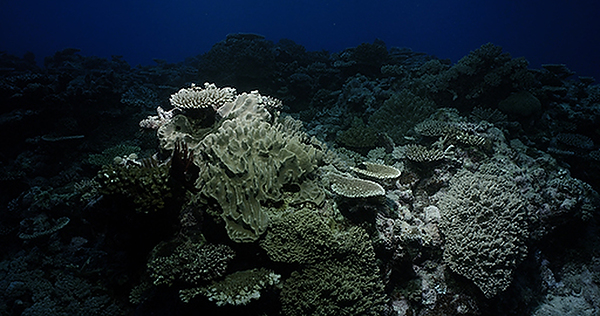
About the author:
Born in Warsaw, Poland, Pawel left the city life of Sydney to build a film production studio in Tasmania. For the past 20 years he’s been making natural history films, mostly underwater and has filmed in locations from the equator to Antarctica. He’s also worked as a DOP on features and live performances, predominantly using cine-style camera setups. In 1999 Pawel produced and directed his first film, Aliens of the Sea. This film received the best documentary award at New York International Film Festival (1999); Aliens of the Sea was awarded the First Prize, Gold Camera Award in US International Film Festival and two Awards for outstanding Cinematography at the International Wildlife Film Festival, Montana (2000).
His footage appeared in many flagship natural history productions, including National Geographic, Discovery and recently BBC’s “First Life”. Pawel also covered News for Channel 7 and in 2013 and 2014 Pawel received silver and gold cinematography awards from the Australian Cinematographers Society for a sequences making Sea of Love 3D IMAX film.
Pawel is an inventor and maker of world’s first 2D and 3D housings able to record undistorted ultra high definition underwater motion pictures, for which he won Innovation Award at NAB Show 2013, competing favorably with companies such as Sony, Canon, Blackmagic, Arri and hundreds of others.
Pawel is actively involved with Australian Cinematographers Society and has been conducting presentations and workshops for their members. These presentations focused on stereography, colour science and the quantitative evaluation of optics and image quality.
To see more of Pawel’s work, please visit his website